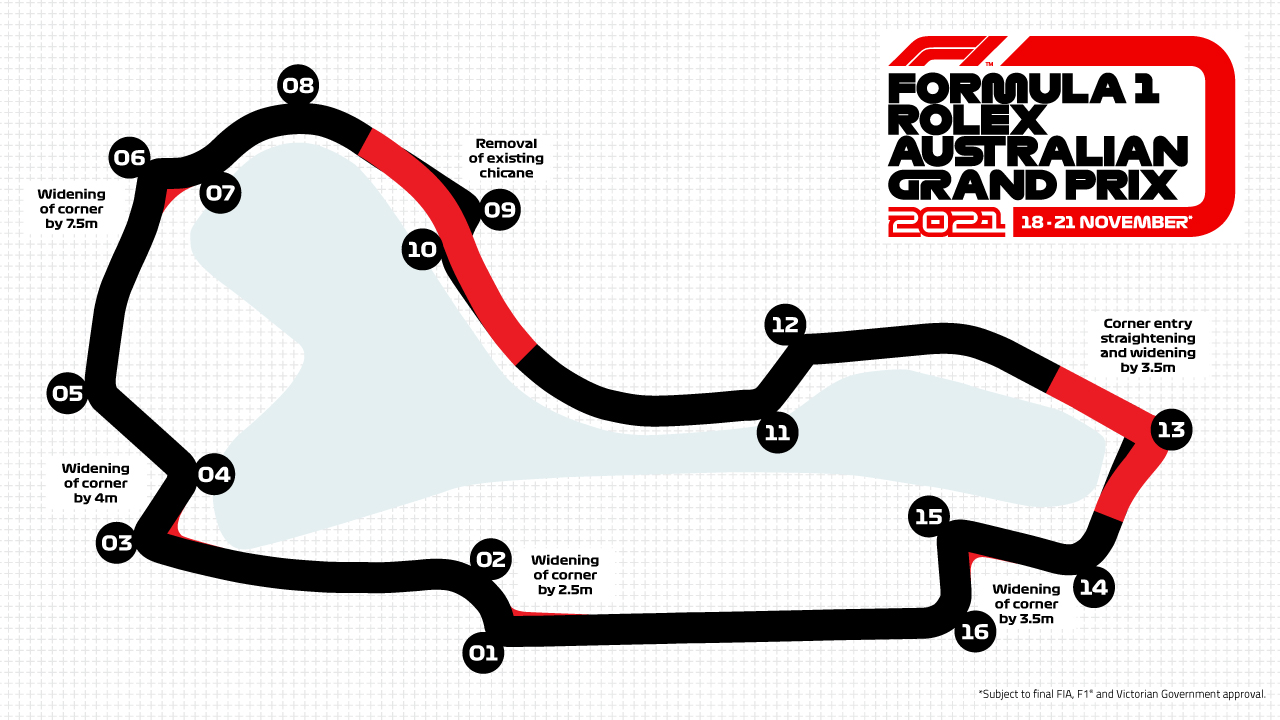Melbourne's Albert Park is undergoing its first major upgrade since first hosting the Australian GP in 1996, and the event's organisers believe the transformations will reward "brave racing" come November.
Formula 1 will return to Melbourne later this season after an absence of two and a half years, a hiatus due to the cancellation of the 2020 race following the onslaught of the coronavirus pandemic and a postponement of this year's event for reason also linked to COVID-19.
But teams and drivers will return in November to a new and improved venue, where a total of five corners are currently being modified while two others will disappear altogether from the street circuit's 5.3km layout.
The most distinctive change to Albert Park's profile will be the removal of the existing chicane at Turn 9 and 10 and its replacement by a fast right hand curve leading to a left-hand sweep that will be followed by a challenging Turn 11-12 complex.
Furthermore, Turns 1, 3, 6, 13 and 15 will be widened and reprofiled, while the entire circuit will be resurfaced immediately after this year's race.
The changes are expected to shave five full seconds off the track's lap times and increase average speeds by around 15km/h.
Australian GP boss Andrew Westacott says the transformations were long overdue.
"Albert Park was first used in the 1950's, but in terms of the modern era it was designed and built in 1995, and it hasn't been resurfaced or adjusted in any major way since then," he told Wide World of Sports.
"What was put down was high quality but it's now reached the end of its life and from the first time it was used in 1996 through until now, Formula 1 cars have evolved.
"If you consider that Albert Park is our playing surface, it's our fairway, or centre court, and it's never really had an upgrade.
"The need to resurface the track was there and at the same time, we're taking the opportunity to adjust particular turns, either with some minor changes or, like around the lakeside, a rather significant change


